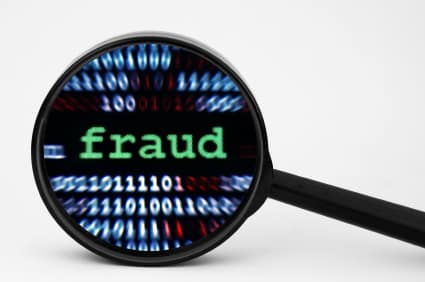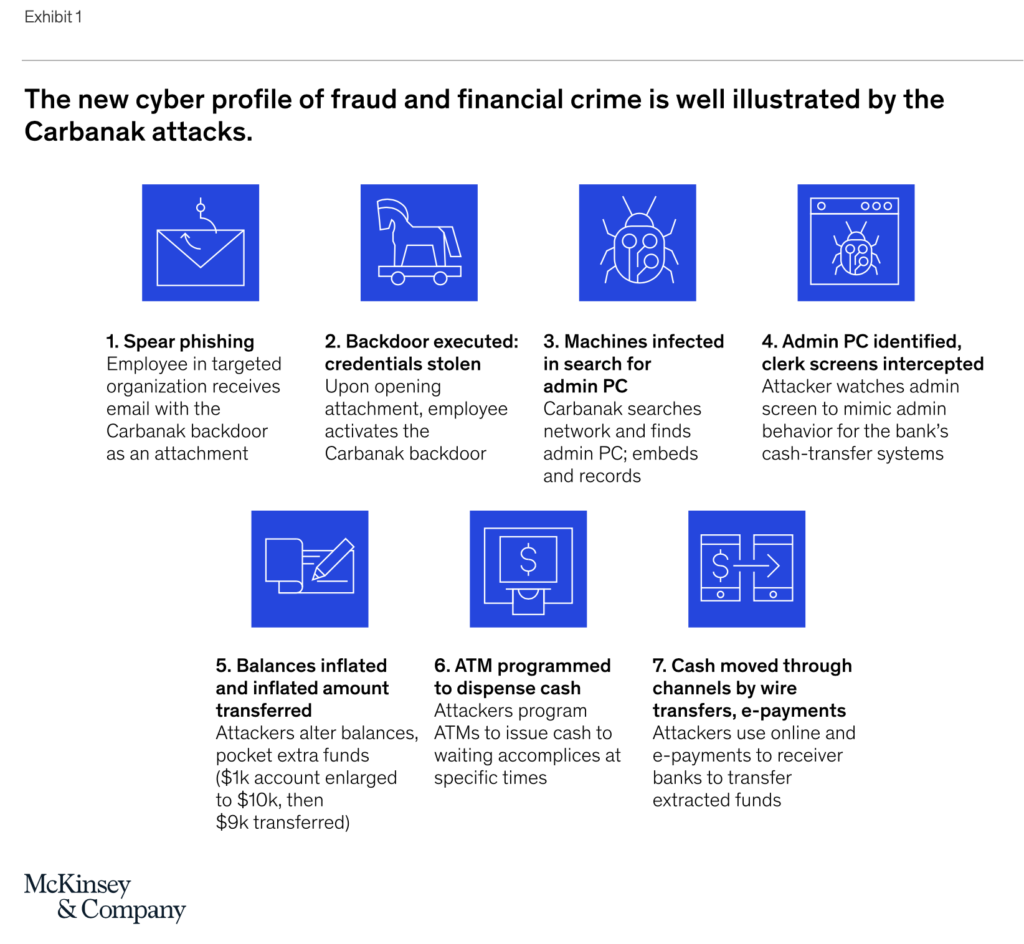Deep Dive: Financial Crime & Fraud in the Age of Cybersecurity

Want to go deep on financial fraud and crime, and learn the difference between the two while also learning about the role of modern cybersecurity tools in curtailing both? Get comfortable and spend some time with this comprehensive article from McKinsey & Company covering Financial crime and fraud in the age of cybersecurity.
Their analysis of the so-called Carbanak attacks (beginning in 2013), for example, illustrates the sophistication and teamwork deployed in these crimes:
These were malware-based bank thefts totaling more than $1 billion. The attackers, an organized criminal gang, gained access to systems through phishing and then transferred fraudulently inflated balances to their own accounts or programmed ATMs to dispense cash to waiting accomplices (Exhibit 1).

The article notes that this crime was one simultaneous, coordinated attack against many banks, deploying a sophisticated knowledge of the cyber environment and “likely understood banking processes, controls, and even vulnerabilities arising from siloed organizations and governance.”
And the attack wasn’t limited to a single channel: ATMs, credit and debit cards, and wire transfers were targets. In studying these attacks, we realize that meaningful distinctions among cyberattacks, fraud, and financial crime are disappearing — and, distressingly, “banks have not yet addressed these new intersections, which transgress the boundary lines most have erected between the types of crimes.” Furthermore, “a siloed approach to these interconnected risks is becoming increasingly untenable; clearly, the operating model needs to be rethought.”
As a “Top 10 Financial Fraud Detection Solutions Providers 2019” (per CFO Tech Outlook Magazine) we learned that banks and financial institutions (FI) need to rethink their strategies and update beyond their legacy systems to combat these innovative and complicated fraud and financial crime approaches. In the case of check fraud, FIs have access to a strong control called doubtful collectability. By using image analysis to identify counterfeits in these schemes, a bank can hold funds and block the electronic flow of funds included in these financial crimes.
This blog contains forward-looking statements. For more information, click here.